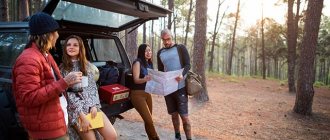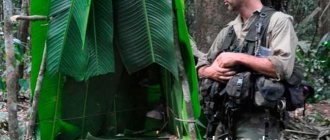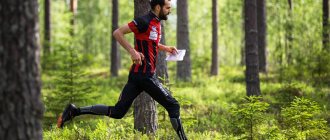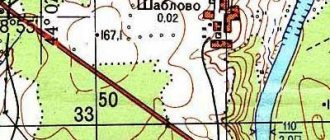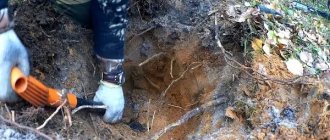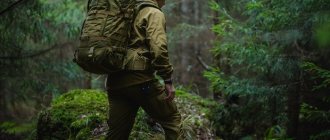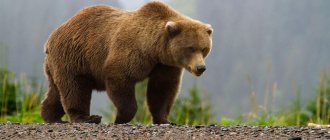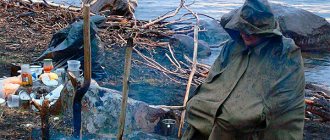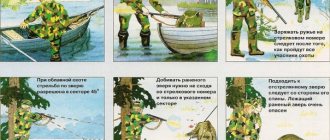Development of prohibition signs
Prohibition signs in the forest: do not litter!
Signs that are used in the forest differ from other prohibitory signs in that they have a random design. If traffic signs are characterized by the same image, size and color design, then forest signs allow and encourage originality in the image, although they clearly represent the same list of prohibited actions.
They are developed by forest districts, environmental organizations, and local governments. Before installation, it is important to check the clarity of such a sign with strangers. If no further clarification is required, then the sign achieves its purpose.
For the color design of the sign, you can use white, black and from 1 to 4 other colors. It was noticed that colored inscriptions are perceived better. The most noticeable are black lettering on a yellow background, black on white and red on green. It is better to make the image stylized, without unnecessary details.
So, if you need to show that it is forbidden to set up tents in a given place, it is enough to draw one tree and a tent under it and cross out the image with a solid red line indicating the prohibition. The image of several trees and bushes and a forest edge in this case will be unnecessary.
Let's not litter in the forest sign
The sign “Not tested on animals” (from English) or - the standard of ethical products, including cosmetics, confirms the refusal to test on animals, that in the preparation of the product no animal components were used, obtained at the cost of the lives of animals (for example, by-products slaughterhouses) that individual components of the product have not been tested on animals. The ethical cosmetics standard prohibiting vivisection (from 2 Latin words: “vivus” - alive and “sectio” - cutting, literally “to cut alive”) was approved by the British Union ( BUAV ) in 1998 with the support of the Royal Society for the Prevention of Cruelty animal appeals (RSPCA). The Not tested for animals sign may look different, but always includes an image. The “Not tested for animals” sign means against “Vivisection”, i.e. “not a single animal was harmed in the production of this product.” Cosmetics that do not contain animal ingredients are also marked with a “V” ( Vegan ). Already in the middle of the 20th century, a powerful movement under the slogan “Beauty without Cruelty” developed in many countries around the world, as a result of which a significant number of enterprises producing cosmetic and hygiene products, as well as perfumes, began to make them from plant products (without animal components) and test in an alternative way, without the use of animals. Moreover, the ineffectiveness of experiments on animals has been scientifically proven, since the physiology of humans and animals is sharply different and metabolic processes occur in their bodies differently. The UK was the first to ban animal testing of cosmetics in 1998. In 2002, EU countries adopted a ban on testing cosmetics, which came into force in 2009. France, where traditionally there is a strong cosmetics lobby, is still actively opposing the ban. In 2003, a similar Standard for Ethical Household Chemicals appeared. (Vegan, UK). The trademark “Vegan” means: there are no components of animal origin. The certificate belongs to a vegan charity promoting and supporting a vegetarian lifestyle. Vegan Society formed in 1944 from a group of vegetarians led by Elsie Shrigley and Donald Watson.
Since April 2007, the headquarters of the Society has been located in the UK, Birmingham. The Vegan Society is now one of the most respected and influential vegan societies in the world and the most respected certification in the UK. Its main idea is the exclusion of any violence against the animal world, all forms of cruelty to animals and their exploitation, the use of any animal products in food, by-products or their derivatives, the use of animals for all kinds of experiments in the medical and cosmetic industry, the use of GMOs from animals genes do not allow testing on animals either at the initiative of the manufacturer or on his behalf or other persons under the control of the manufacturer. Cosmetic products should not even contain milk and honey. In addition, when applying for registration and certification of a product, those containing GMOs must be labeled accordingly. There can be several Vegan signs; they are distinguished by the characteristic image of the letter “”. The Vegan label can be used by manufacturing companies around the world to identify their products as vegan. Such companies pay an annual membership fee to the Vegan Society. Membership fees go to charitable purposes.
What principles of GOST can be applied
When creating a prohibitory sign, you can be guided by the principles of GOST R.12.4.026-2001.SSBT (prohibition in case of other dangers or dangerous actions):
- Red color must make up at least 35% of the total area of the sign.
- The red transverse stripe is drawn from left to right from top to bottom at an angle of 45 degrees to the horizontal and is not interrupted by the image.
- The red stripe can be replaced with an explanatory inscription in red or black.
- Sign “Passing and passing is prohibited. Forest felling", which is used during logging, is developed in accordance with this GOST.
- Prohibition signs in the forest can be in the shape of a circle or a rectangle. Commonly accepted sizes: 0.8 x 1 m, 1 x 1.2 m, 1 x 1.5 m. Other sizes are also acceptable.
- The meaning of the prohibition should be obvious, not requiring additional explanation; the inscriptions, if any, should be very brief (Research has shown that the maximum number of words that a person can remember the first time is 7, so on average 5 words are used on a sign.).
Full houses and signs in the forest
Our assortment: fire safety signs “Protect the forest from fire”, “Dumping of garbage is prohibited”, “Protect the forest from fire”, safety signs for plots “Passing and driving is prohibited! Forest felling!”, “Attention! Removal of timber", navigation signs to the fire reservoir, "Direction to the fire reservoir", signs of hunting grounds, posters and stands:
- Occupational safety during logging operations
- Fire safety in forests
- The posters were developed jointly with the Ministry of Forestry of the Republic of Karelia, the Labor Safety Inspectorate in the Republic of Karelia. Stands for the content of posters are made in any size.
Please note => Benefit for full-time students with children
Basic prohibitions
Prohibition signs in the forest
In the forest it is prohibited:
- Make fires near coniferous trees, on peat bogs, in forest cutting areas that have not yet been cleared of bark and branches;
- Make fires directly under a tree, regardless of its species;
- Throw burning matches and cigarette butts;
- Leave trash;
- Throwing glass and plastic containers, which can cause a fire when heated in the sun;
- Make a fire using flammable materials;
- Place tents in places not intended for this purpose;
- Leaving a smoldering fire unattended;
- Cut down living trees;
- Refuel the car with fuel while its engine is running;
- Burn the grass;
- Use pyrotechnic products;
- Destroy bird nests and anthills;
- Collect plants listed in the Red Book;
- Visit the forest during sanitary processing of forest lands.
Garbage in nature
By the way, there is one interesting site on the Internet, rosmusor.info. There you can download all kinds of signs and plates against litter. If you have the opportunity, download it, print it out and hang it up where you see another unauthorized garbage dump. By creating this topic, I want to draw your attention to the garbage that vacationers leave in nature. We all love to relax in nature with tents, fish, swim and barbecue. We all dislike landfills in the forest, garbage in nature and on the beach, but for some reason not everyone likes to clean up after themselves?
Please note => You can return loan insurance from Sberbank
Rules for installing signs
When placing these signs, the following factors are taken into account:
- They should come into view often. Therefore, they are installed along roads and clearings closer to populated areas, near water sources, and at transport stops.
- Their design immediately attracts attention.
- They are installed at right angles to the line of sight so that it is easy to perceive information without stopping. They are mounted on a pole at a height of one and a half to two meters.
- The choice of location for the sign must be justified. For example, if a sign prohibits making a fire under coniferous trees, then next to it there are pine, spruce or other trees that are classified as coniferous.
- Over time, signs placed in the forest can become familiar, and people stop paying attention to them.
- To prevent this from happening, you can periodically swap them. It is also recommended to put away for storage those signs that have a seasonal focus.
Ecological holiday for older children
Game “Whose traces?” Here is the first trace - The scythe has no den, He does not need a hole, His legs save him from enemies, And his bark saves him from hunger. (Hare.) Second trace - You and I recognize the animal by these two signs: He wears a gray fur coat in the winter, And a red fur coat in the summer. (Squirrel.) After the game, the teacher collects the children’s hats, they sit down near the fire. Conversation “Who hears what?” Which animal in the forest do you think has better hearing? Those who have big ears hear better. (Children look at the animals’ ears in the pictures and find out that the elk hears best.)
The bat has big ears, she hears better than anyone, but you won’t wait for her here.
Now is the day, she is sitting somewhere in a hollow or in a cave, sleeping upside down and upside down, clinging to some ledge with her claws. They say about her that she not only hears, but also sees with her ears. But no matter how much you look at the grasshopper’s head, you will not find ears here. Even if you search for an hour, you won’t find it. Because they are not there. (Children look at a picture of a grasshopper.)
The grasshopper hears with its feet.
Their ears are narrow slits on their front legs. When a grasshopper listens, it does not turn its head towards the sound, but shows its legs. Birds don't hear very well. Most don't have ears, so they don't hear well and rely most on their eyes. But there are exceptions among them: those who have to hunt at night - owls, eagle owls. Their ears are made of feathers. They hear perfectly. Here is a bee, a fly, a mosquito, a moth that lives in people’s houses and eats their things and food - they hear with their whiskers. Locust - belly. Pisces and crayfish hear with their whole body. 22 Dec 2021 marketur 292
Share this post
- Related Posts
- Indexation of corporate pension Transneft 2021
- Is maternity capital given for the first child?
- How to restore a passport if all documents are lost
- Questionnaire for employees when applying for a job
Special prohibition signs will be installed in national parks to protect birds
Warning boards have already been installed in the Ulyanovsk eco-park “Black Lake” and in the Nizhny Novgorod Kerzhensky Nature Reserve. However, according to ornithologists, their installation in the regions is carried out only through the efforts of enthusiasts. However, Saltykov is still counting on the help of independent activists, since the mass introduction of sold-out signs in national parks will require budgetary funds; according to SOPR, the cost of 1 sign is 1 thousand rubles. According to Saltykov, recreational areas are mainly inhabited by birds that are well adapted to being close to humans. In the Moscow region there are about 100 of the 300 species, the rest require special conditions. For them, installing special signs (sold out signs) will reduce negative factors. Previously, SOPR implemented a similar project in Ulyanovsk. In addition to installing notices, ornithologists carried out zoning of the territory - they installed signs where tourists can go and where they should not go during the bird nesting period.
